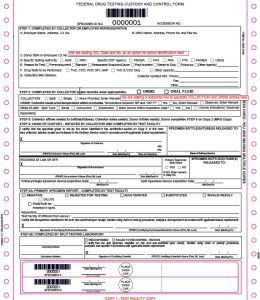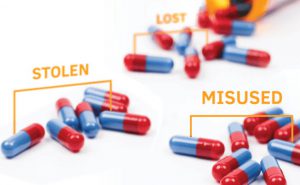No industry is free from the negative impact of substance abuse. It slows productivity, increases the number of accidents, hurts employee morale and blows holes through the company bottom line.
Past surveys of full-time employees indicate that the majority of workers believe their employers don’t do enough to prevent substance abuse at work and wish they would do more. The problem is that many employers don’t know where to start. Sure, everyone’s heard of drug testing, but drug testing for the sake of drug testing is not necessarily creating a drug-free workplace.
Employers should understand that drug testing is legal in every state and is actually mandated by the federal government in certain industries such as transportation. Some states have laws that regulate how drug testing will be administered, but no state prohibits it altogether. Employees may refuse to be tested; however, such conduct can typically be considered a violation of a company’s policy and subjects the individual to some type of disciplinary action, up to and including termination.
There’s a lot to drug testing, but setting up an effective program does not have to be difficult. There are six easy steps to getting started:
1. Identify your objectives. Why you test will determine when, who and how you test. Some of the most common objectives include increasing safety and safeguarding the health of your workers. All companies are different; therefore, each firm’s reasons for drug testing will be unique.
2. Choose a drug testing provider. Why try to figure it out on your own? Get assistance from an experienced, reputable drug testing supplier who will provide answers to your questions and streamline the process of setting up a program.
3. Decide how to conduct drug testing. Nowadays employers have several options available – from traditional lab-based urine testing to oral-fluid and hair testing. A program can be designed to meet virtually any set of circumstances.
4. Decide when to conduct drug testing. There are many circumstances that can trigger a test, including pre-employment screens and post-accident, reasonable suspicion and random testing of current employees.
5. Write a drug testing policy. A comprehensive policy includes several essential components. For instance, a good policy will include an explanation of prohibited behaviors, the consequences of policy violations, and when and how drug testing will occur. Applicable state and federal laws must also be covered. A good drug testing provider will be able to provide valuable guidance.
6. Train supervisors and employees. Help employees understand what is expected of them by providing training specific to your program. Supervisors must be trained to spot the signs and symptoms of substance abuse, and other employees should understand the consequences of policy violations.
For more information about drug testing, visit our website.
 Your Privacy Choices
|
Privacy Notices
|
Terms
|
Language Assistance / Non-Discrimination Notice | Asistencia de Idiomas / Aviso de no Discriminación | 語言協助 / 不䈚視通知
Your Privacy Choices
|
Privacy Notices
|
Terms
|
Language Assistance / Non-Discrimination Notice | Asistencia de Idiomas / Aviso de no Discriminación | 語言協助 / 不䈚視通知



















No industry is free from the negative impact of substance abuse. It slows productivity, increases the number of accidents, hurts employee morale and blows holes through the company bottom line.
Past surveys of full-time employees indicate that the majority of workers believe their employers don’t do enough to prevent substance abuse at work and wish they would do more. The problem is that many employers don’t know where to start. Sure, everyone’s heard of drug testing, but drug testing for the sake of drug testing is not necessarily creating a drug-free workplace.
Employers should understand that drug testing is legal in every state and is actually mandated by the federal government in certain industries such as transportation. Some states have laws that regulate how drug testing will be administered, but no state prohibits it altogether. Employees may refuse to be tested; however, such conduct can typically be considered a violation of a company’s policy and subjects the individual to some type of disciplinary action, up to and including termination.
There’s a lot to drug testing, but setting up an effective program does not have to be difficult. There are six easy steps to getting started:
1. Identify your objectives. Why you test will determine when, who and how you test. Some of the most common objectives include increasing safety and safeguarding the health of your workers. All companies are different; therefore, each firm’s reasons for drug testing will be unique.
2. Choose a drug testing provider. Why try to figure it out on your own? Get assistance from an experienced, reputable drug testing supplier who will provide answers to your questions and streamline the process of setting up a program.
3. Decide how to conduct drug testing. Nowadays employers have several options available – from traditional lab-based urine testing to oral-fluid and hair testing. A program can be designed to meet virtually any set of circumstances.
4. Decide when to conduct drug testing. There are many circumstances that can trigger a test, including pre-employment screens and post-accident, reasonable suspicion and random testing of current employees.
5. Write a drug testing policy. A comprehensive policy includes several essential components. For instance, a good policy will include an explanation of prohibited behaviors, the consequences of policy violations, and when and how drug testing will occur. Applicable state and federal laws must also be covered. A good drug testing provider will be able to provide valuable guidance.
6. Train supervisors and employees. Help employees understand what is expected of them by providing training specific to your program. Supervisors must be trained to spot the signs and symptoms of substance abuse, and other employees should understand the consequences of policy violations.
For more information about drug testing, visit our website.